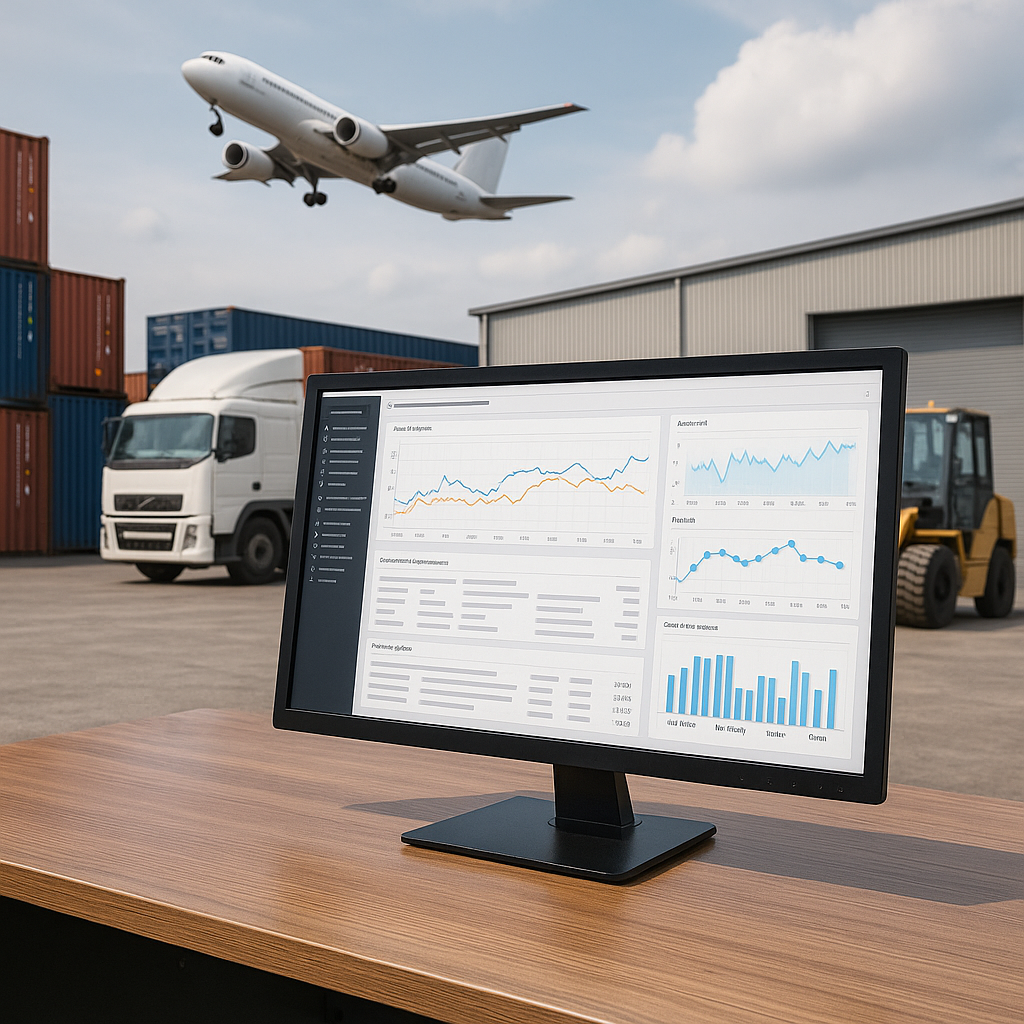AI enhances transport efficiency and on-time delivery in global supply chains
Efficient transportation is a foundational element of modern supply chains. The strategic selection of shipping modes, whether air, rail, or maritime, determines the delicate balance between delivery speed and cost efficiency. Faster shipping improves customer satisfaction but comes at a high financial and environmental cost. Conversely, slower modes reduce expenses but risk delays and disruptions. The complexity arises from the need to make these decisions in environments that are inherently dynamic and uncertain.

A new AI-powered framework is redefining how global supply chain systems optimize their delivery strategies. Researchers have introduced a data-driven decision framework that promises to improve both responsiveness and efficiency in logistics.
Their study, titled “Supply Chain Optimization via Generative Simulation and Iterative Decision Policies” and published in the Proceedings of the 2025 Winter Simulation Conference, presents a novel method called Sim-to-Dec, which integrates generative simulations with adaptive decision-making policies. This breakthrough approach is designed to outperform traditional rule-based logistics systems by mimicking real-world dynamics and continuously learning from simulated feedback.
Why is transportation decision-making in supply chains so complex?
Efficient transportation is a foundational element of modern supply chains. The strategic selection of shipping modes, whether air, rail, or maritime, determines the delicate balance between delivery speed and cost efficiency. Faster shipping improves customer satisfaction but comes at a high financial and environmental cost. Conversely, slower modes reduce expenses but risk delays and disruptions. The complexity arises from the need to make these decisions in environments that are inherently dynamic and uncertain.
The researchers emphasize that existing decision-making models often fall short in addressing this challenge. Traditional systems rely on static rules or pre-programmed heuristics that struggle to adapt to rapidly changing data, such as fluctuating fuel prices, weather disruptions, or supply-demand imbalances. Moreover, these models lack mechanisms for integrating real-time feedback, making them unsuitable for modern logistics environments that require agile, data-responsive solutions.
Sim-to-Dec seeks to overcome these limitations by integrating simulation and decision-making in a closed loop. Unlike conventional simulators that are used only for offline testing, this system treats simulation as a live feedback mechanism, directly influencing the optimization of shipping decisions.
How does the Sim-to-Dec framework work?
Sim-to-Dec is composed of two interdependent components: a generative simulation module and a dual-aware decision model. The simulation module uses autoregressive modeling to create realistic forecasts of supply chain state transitions. By modeling how shipments and logistics networks evolve over time, this component removes the need for manually crafted rules. Instead, it generates highly granular, continuous updates that reflect the real-world behavior of transportation systems under diverse conditions.
In parallel, the decision model leverages both historical data and predicted future states to guide logistics decisions. Referred to as "history–future dual-aware," this model interprets past trends while anticipating downstream impacts, enabling it to make smarter choices about which shipping mode to assign to each order. The model learns through repeated interaction with the simulator, refining its decision logic over time in a process akin to reinforcement learning.
This end-to-end optimization pipeline means the simulator doesn’t just test decisions, it actively trains and shapes the decision-making process. The simulation outcomes inform the next iteration of policy updates, allowing the model to dynamically adapt to evolving supply chain realities.
What sets this framework apart is its ability to generalize across different scenarios. Whether dealing with sudden demand spikes, infrastructure bottlenecks, or geopolitical disruptions, the AI system demonstrates adaptability that outperforms fixed-rule engines. The system is also robust to data irregularities, reducing the need for consistent, clean inputs that legacy systems often depend on.
What are the practical benefits for real-world supply chains?
To evaluate its effectiveness, the Sim-to-Dec framework was tested using three real-world supply chain datasets. The model was tasked with selecting optimal transportation modes for varying orders under constraints such as budget caps, timing restrictions, and unpredictable logistical delays. In each case, Sim-to-Dec achieved superior performance in terms of on-time delivery rates and profit margins when compared to standard baselines.
The experiments revealed several significant advantages. First, the system maintained high delivery reliability, even when faced with erratic input variables. Second, it demonstrated economic efficiency by optimizing mode selection to minimize costs while still satisfying service-level agreements. Finally, it enabled rapid policy refinement, reducing the time and cost of designing logistics strategies manually.
Practically, this means that logistics providers, retailers, manufacturers, and third-party carriers can deploy Sim-to-Dec to make smarter shipping decisions at scale. The framework is especially suited to high-stakes industries such as e-commerce, pharmaceutical distribution, and global food supply chains, where delayed or inefficient deliveries carry substantial consequences.
The design allows for transparent reasoning, making it possible to audit why a particular mode was chosen over another. This interpretability increases the confidence of supply chain managers and supports compliance with regulatory standards that demand explanation of automated decisions.
The researchers envision that further development in this domain could include integration with real-time IoT sensors, multi-agent coordination, and human-in-the-loop decision systems. Additionally, expanding this model into strategic areas like warehouse management, route optimization, and inventory allocation could yield even broader efficiencies across the supply chain ecosystem.
- FIRST PUBLISHED IN:
- Devdiscourse










